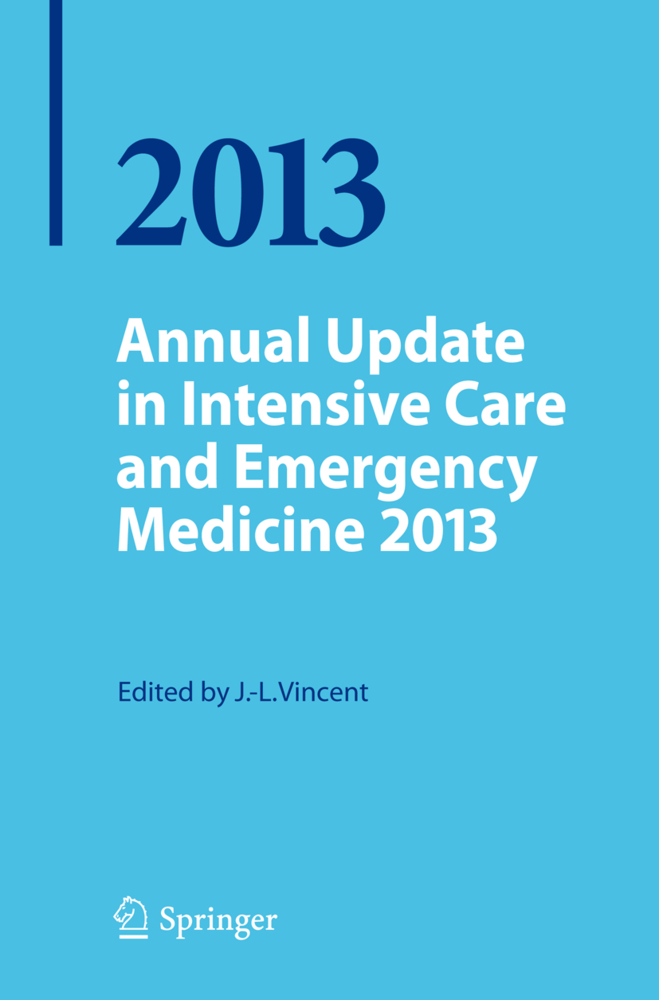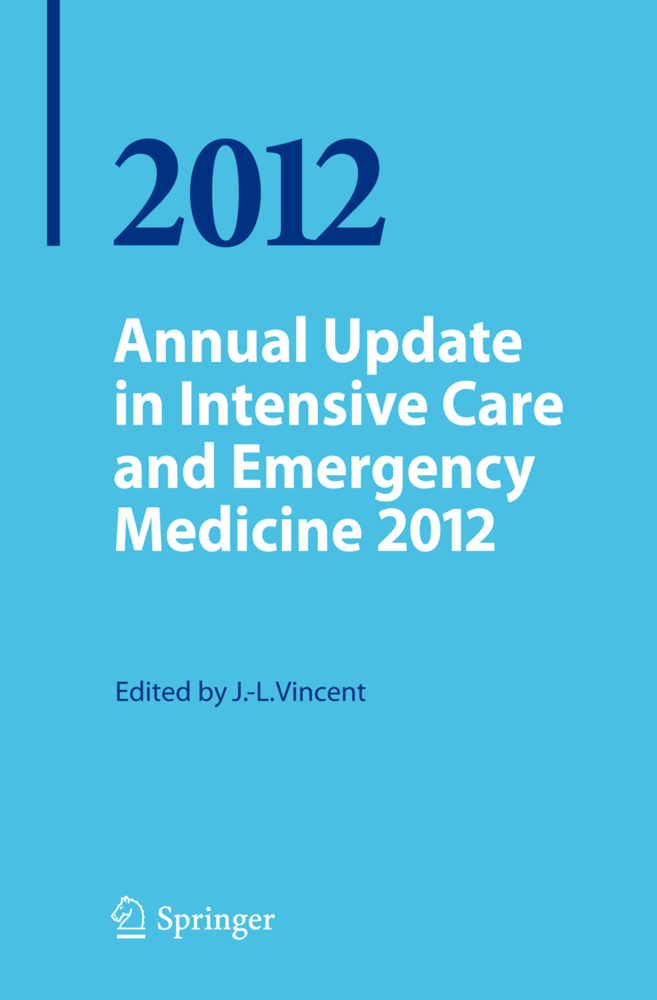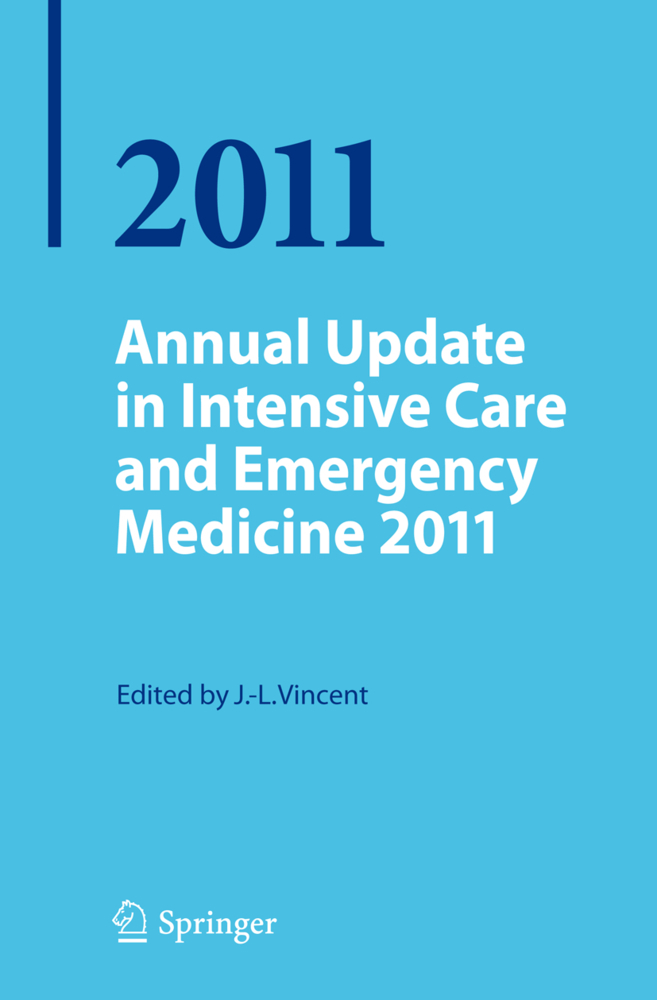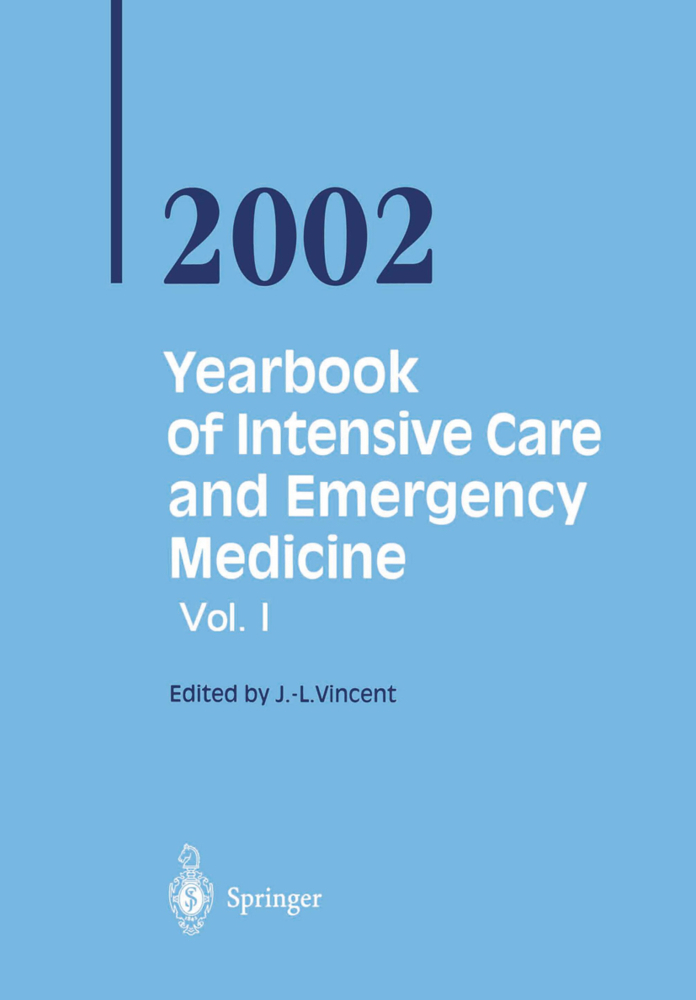Yearbook of Intensive Care and Emergency Medicine 2007
The Yearbook compiles the most recent developments in experimental and clinical research and practice in one comprehensive reference book. The chapters are written by well recognized experts in the field of intensive care and emergency medicine. It is addressed to everyone involved in internal medicine, anesthesia, surgery, pediatrics, intensive care and emergency medicine.
1;Table of Contents;52;List of Contributors;123;Common Abbreviations;294;Biomarkers;314.1;The Diagnosis of Sepsis: The Present and The Future;324.2;Procalcitonin: Nice to Know, Need to know, or Needs Further Research?;394.3;Diagnostic and Prognostic Value of Hormokines as Biomarkers in Severe Infections;514.4;Novel Biomarkers and the Outcome from Critical Illness and Major Surgery;614.5;Molecular Approaches to Detection of Bacteria in Critical Care Patients;735;Sepsis and Infection: Management;825.1;Understanding and Optimizing Outcome in Neonates with Sepsis and Septic Shock;835.2;Effects of Vasoactive Agents on the Gastrointestinal Microcirculation in Septic Shock;975.3;Hemodynamic Effects of Activated Protein C in Septic Shock;1035.4;Adrenomedullin in the Treatment of Cardiovascular Dysfunction and Sepsis;1095.5;Antioxidants for the Treatment of Endothelial Dysfunction in Critical Illness;1245.6;Plasma Cortisol: Time to Look Deeper?;1345.7;Glucose Control and Monitoring in the ICU;1416;Severe Lung Infections;1586.1;Current Concepts of Severe Pneumococcal Community-acquired Pneumonia;1596.2;Respiratory Syncytial Virus (RSV) in the Pediatric Intensive Care Unit;1716.3;Pneumocystis Pneumonia in Non-AIDS Immunocompromised Patients;1837;Mechanisms of Organ Dysfunction;1977.1;The Role of Neutrophil-Derived Myeloperoxidase in Organ Dysfunction and Sepsis;1987.2;Are Mitochondria Responsible for Improved Outcomes in Recent Studies?;2137.3;The Impact of Chronic Disease on Response to Infection;2227.4;Immunomodulatory Effects of General Anesthetics;2337.5;Critical Illness Stress-induced Immune Suppression;2427.6;Transcription Factors and Nuclear Cofactors in Muscle Wasting;2547.7;Organ Dysfunction in the ICU: A Clinical Perspective;2638;Lipids;2718.1;Sphingolipid Metabolism in Systemic Inflammation;2728.2;Statins in Sepsis and Acute Lung Injury;2908.3;Potential Mechanisms by which Statins Modulate the Development of Acute Lung Injury;2999;Acute Lung Injury;3129.1;Matrix Metalloproteinases in Acute Lung Injury;3139.2;The Role of Vascular Endothelial Growth Factor in Lung Injury and Repair;3219.3;Cell Regeneration in Lung Injury;3329.4;The Extracellular Matrix of the Lung: The Forgotten Friend!;34210;Mechanical Ventilation;35710.1;Advances in Translaryngeal Tube Technology;35810.2;Is One Fixed Level of Assist Sufficient to Mechanically Ventilate Spontaneously Breathing Patients?;36910.3;Patient-ventilator Interaction During Non-invasive Ventilation with the Helmet Interface;37911;Protective Ventilation in Respiratory Failure;38911.1;Dynamic Lung Imaging Techniques in Mechanically Ventilated Patients;39011.2;Can We Protect the Lung from Acute Injury?;40011.3;Rationale for High-Frequency Oscillation as a Primary Lung- Protective Mode in Patients with ALI/ ARDS;40711.4;The Role of Protective Ventilation in Cardiac Surgery Patients;41711.5;Alveolar Pressure/volume Curves Reflect Regional Lung Mechanics;42612;Cardiovascular Topics;43412.1;Cardiovascular Surgery in the Aging World;43512.2;Intensive Care Unit Arrhythmias;44912.3;Diastolic (Dys)Function in Sepsis;46212.4;Autonomic Dysfunction: A Relevant Component in Multiple Organ Dysfunction Syndrome;47313;Hemodynamic Monitoring;48613.1;The Use of Hemodynamic Monitoring to Improve Patient Outcomes;48713.2;Using Mathematical Models to Improve the Utility of Quantitative ICU Data;49513.3;The Meaning of Hemodynamic Monitoring in Patients with Shock: Role of Echocardiography;50913.4;Transpulmonary Thermodilution for Advanced Cardiorespiratory Monitoring;51713.5;Using Heart-Lung Interactions for Functional Hemodynamic Monitoring: Important Factors beyond Preload;52713.6;Diagnosis of Central Hypovolemia in a Spontaneously Breathing Patient;53613.7;Assessment of Fluid Responsiveness in Spontaneously Breathing Patients;54713.8;Passive Leg Raising;55813.9;Extravascular Lung Water Measurement;56514;Intravenous Fluid Therapy;57614.1;Fluid M
Vincent, Jean-Louis
| ISBN | 9783540494331 |
|---|---|
| Artikelnummer | 9783540494331 |
| Medientyp | E-Book - PDF |
| Auflage | 2. Aufl. |
| Copyrightjahr | 2007 |
| Verlag | Springer-Verlag |
| Umfang | 1040 Seiten |
| Kopierschutz | Digitales Wasserzeichen |




